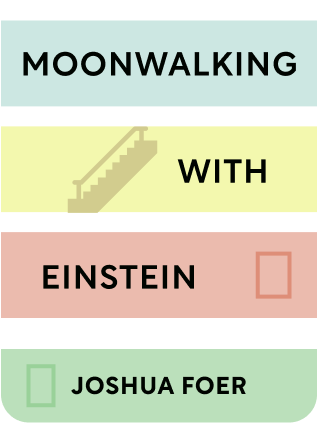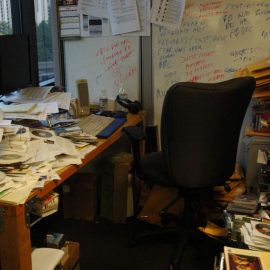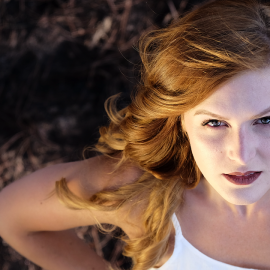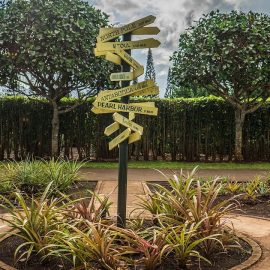

This article is an excerpt from the Shortform summary of "Moonwalking With Einstein" by Joshua Foer. Shortform has the world's best summaries of books you should be reading.
Like this article? Sign up for a free trial here .
What is the Loci method for memory? How do you use it, and does it really work?
The Loci method for memory is a system that allows you to be intentional about the way you story and access your memories. Usually, memories are randomly connected. But with the Loci memory technique, you can learn to utilize your “memory palace.”
Read more about the Loci method for memory below and how you can use loci memory training.
Loci Method Memory Technique
The goal of memory techniques is to transform information into a format the brain is naturally good at understanding—meaningful images and places. To do this, you’ll use the loci method memory, which is the foundation for the memory techniques that follow.
The loci method of memory involves placing images of whatever you need to remember inside a “memory palace,” which is a memory of a real place you know very well, such as your childhood home. For example, if your shopping list contains blueberries, crackers, cereal, and beer and you wanted to memorize this shopping list, you might mentally place the blueberries in the mailbox at the end of your driveway, the crackers on the front lawn, the cereal in front of the front door, and the beer on the entranceway mat. When you need to remember the list, you simply mentally tour your memory palace and look for the objects you left in significant locations.
Some things you need to remember might not lend themselves well to imagery. There are some more structured techniques for remembering cards, numbers, and words below, but in general, you can transform abstract things to remember into images using creativity. You’ll remember images best if you can harness the brain’s natural strengths and interests. Try to make images:
- Novel. If you’ve seen something before, you’re less likely to remember a specific instance of it.
- For example, if you need to remember to charge your phone, imagine your phone and charger having a silly conversation.
- Lewd or funny. The brain is naturally interested in both of these things.
- For example, if you need to remember to go to the bank, imagine a bunch of nude bank robbers.
- Multisensory. The more cues you can create for a memory, the easier it will be to recall it.
- For example, if you need to remember to pick up horseradish, imagine the smell, taste, and texture of it as well as the visual image.
- Personal. You’ll remember things better if they relate to what’s already in your head because they have a web to fit into.
- For example, if you’re interested in military history, use tanks and planes in your images.
In addition to the method of loci, there are five additional memory techniques. You can combine any of them with the method of loci—once you’ve used the technique to transform information into an image or more memorable form, you can store it in your memory palace.
Using Memory Palaces
The loci method of memory is a way of organizing memory storage in your brain. Normally, our memories are stored in random, semantic networks, but if we can be intentional about storage, we can more easily recall information. The loci method for memory is the foundation for most memory techniques.
Loci memory training involves two stages: transforming information into an image and then placing the image into a memory of a physical place you know well, such as your childhood home. This place will be your “memory palace.” For example, if your shopping list consists of eggs, bread, milk, and butter, place the eggs at the foot of your driveway, the bread in front of the door, the milk on the dining room table, and the butter on your bed.
Transforming a piece of information into an image forces you to pay attention to it, which results in you remembering it better. This is how loci memory training works. Make the image as memorable as possible by giving it some or all of the following characteristics:
- Multisensory. The more senses you can add to an image, the more cues you’ll create.
- For example, if the first thing on your to-do list is to buy garlic, put the garlic in your mailbox (or at the first thing you encounter when you approach your house). Imagine how it smells and tastes. Not only will a visual remind you of the garlic, but a smell or taste might also cue the memory.
- Funny or lewd. The human brain evolved to find humor and sex interesting.
- For example, if the second thing on your shopping list is orange juice, put a vat of orange juice in front of your front door and imagine Brad Pitt skinny-dipping in it.
- Novel. When you have a lot of memories of something, such as cereal, your brain files the latest instance into “another memory of cereal.” The latest memory blends in with all the other times you’ve encountered cereal. You can make this memory of cereal distinct by making it very pretty or ugly, supernatural, or anthropomorphizing or animating it.
- For example, if the third thing on your shopping list is cereal, imagine that your Rice Krispies are all spies communicating via the snap, crackle, and pop of Morse code. You’ve never before encountered cereal spies, so this memory won’t have to compete with any existing ones. Put the Rice Krispie spies to the left or your front door.
- Concrete. Abstract words are difficult to remember. Make them more concrete by subbing in a concrete word that rhymes or involves a pun.
- For example, if after shopping you need to email your mom to tell her you’re on your way home, switch the word “e-mail” to “she-male.” Imagine a she-male sending an email. And to link the email to your mom, imagine your mom giving the she-male a neck massage while he/she types the email.
- Personal. You remember things better when you can relate them to your existing experiences.
- For example, if you need to get gas on the way home and you love country music, you’ll remember an image of Shania Twain better than an image of Beethoven.
The Loci method for memory relies on use of the memory palace. Many other memory techniques rely on the memory palace, and learning the Loci memory technique is a good foundation.

———End of Preview———
Like what you just read? Read the rest of the world's best summary of Joshua Foer's "Moonwalking With Einstein" at Shortform .
Here's what you'll find in our full Moonwalking With Einstein summary :
- The memory techniques that took the author from novice to US memory champion in one year
- The 6 key types of memory we use everyday
- Why memory isn't just genetic, and how you can improve your memory with the right techniques






